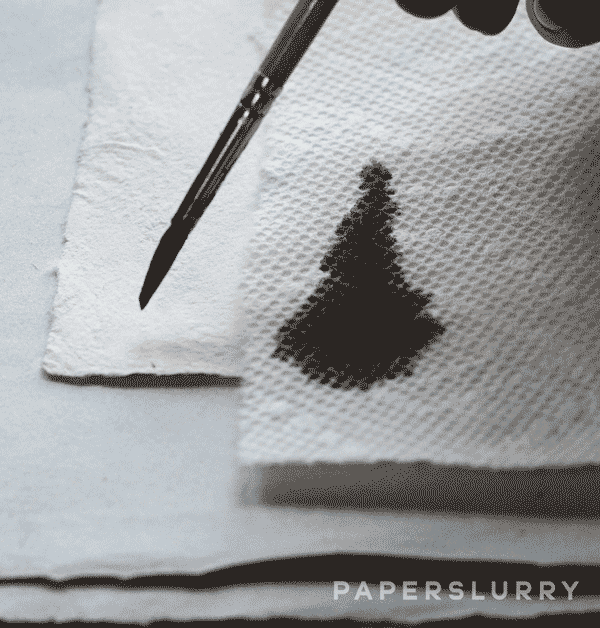Sizing and Paper: Watch This to Learn!
Ever wonder why paper towels excel at soaking up the red wine you spilled, where the pile of junk mail would fail miserably? Okay—maybe you have, or maybe you haven’t. In any case, it’s all about the sizing.
Without sizing, paper tends to soak up anything liquid. For instance, ink will bleed or feather, immediately soaking into the paper. See above for an example of ink on paper towel.
With sizing added, both watercolors and wine will sit on the top surface of the paper for a bit longer. The above shows how the line is has drastically crisper edges on the sized handmade paper. Sized paper is generally tougher and stronger, as well.
INTERNAL SIZING
In the papermaking process, sizing can be applied directly into the wet pulp. This is called internal sizing, and most hand papermakers which protects and coats each fiber.
EXTERNAL SIZING
Sizing can also be applied externally (also called surface or tub sizing), after the paper has be formed, pressed, and dried. Gelatin, wheat starch, and egg whites are more common external sizing options.
IT'S A BIG WORLD
Various types of sizing have been used through the ages and in different traditions (too much to cover here!). Also, the amount, type, and application of sizing is unique to each papermaker and their handmade paper—experimentation in the studio and the intended purpose of the paper is key.
Interested in finding out more? Here’s further reading:
You’re in luck! The winter 2015 sizing issue of Hand Papermaking Magazine has an excellent group of articles focused on sizing.
Hungry Bibliophiles is a project by Russell Maret and Tim Barrett that involves cookbooks, historical sizing research, and externally sizing paper after printing.
And nice basic breakdown of sizing handmade paper.



